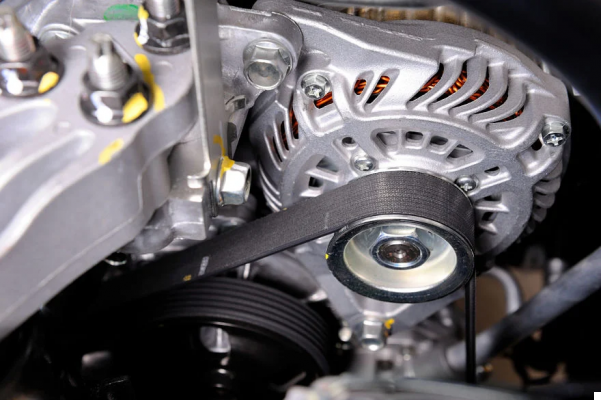 Item: Alternator Belt Change and Other Related Parts
Item: Alternator Belt Change and Other Related Parts
In this article, we will delve into the world of car maintenance to provide you with all the information you need on changing the alternator belt, the alternator itself, the timing kit, the auxiliary belt and the alternator pulley. We will also explain when and how to change these parts, as well as the symptoms and failures related to them.
1. Cost and time to change the alternator belt
The cost and time to change the alternator belt can vary depending on the model and make of your car, as well as the labor of the workshop. On average, the cost can range between X and Y euros, and the change time can take around Z hours. It is important to note that these values are approximate and may vary in each case.
2. The alternator: operation and maintenance
The alternator is a fundamental part of the electrical system of your car, since it is responsible for generating the energy necessary to charge the battery and power the different electrical components of the vehicle. Proper alternator maintenance is important to prevent breakdowns and prolong its life.
Alternator maintenance includes periodic inspection of the brushes and the voltage regulator, as well as cleaning of the terminals and connection cables. If you're seeing symptoms like dim lights, starting problems, or a dead battery, your alternator may be failing and need to be replaced.
3. Distribution kit: importance and recommended change
The timing kit is a set of parts that includes the timing belt, tensioners and pulleys. Its main function is to synchronize the movement of the engine's valves and pistons, thus avoiding possible collisions and serious damage. It is essential to change the distribution kit according to the manufacturer's recommendations, generally every X kilometers or every Y years.
Changing the distribution kit is a complex task that requires technical knowledge and specific tools. For this reason, it is recommended to go to a specialized workshop to carry out this operation. The cost of the change may vary depending on the model and make of your car, as well as the labor of the workshop.
4. Auxiliary belt and alternator pulley: importance and maintenance
The auxiliary belt, also known as an accessory belt, is a part that transmits power from the crankshaft to different engine components, such as the alternator, power steering pump, and air conditioning compressor. It is important to periodically check the auxiliary belt to detect possible wear or cracks, since its breakage can cause the mentioned accessories to lose function.
The alternator pulley, for its part, is responsible for guiding and maintaining the proper tension on the alternator belt. If you notice noise or vibration coming from the alternator, the pulley may be worn or damaged and may need to be replaced.
Frequently Asked Questions (FAQs)
1. What is the life of the alternator belt?
The useful life of the alternator belt may vary depending on the model and make of your car, as well as the conditions of use and maintenance. In general, it is recommended to change the alternator belt every X kilometers or every Y years. However, it is important to periodically check its condition and replace it if signs of wear or cracks are observed.
2. What are the symptoms of a faulty alternator?
Symptoms of a faulty alternator can include dim lights, starting problems, a dead battery, unusual noises coming from the alternator, and faulty electrical components in the vehicle. If you experience any of these symptoms, it is advisable to go to a specialized workshop to carry out a diagnosis and, if necessary, replace the alternator.
3. When should I change the timing kit?
The change of the distribution kit must be carried out according to the manufacturer's recommendations, generally every X kilometers or every Y years. It is important to follow these indications to avoid possible serious damage to the engine, since a failure in the timing belt can cause irreparable damage. If you are not sure when you should change the timing kit, consult your car's owner's manual or go to a specialized workshop.
Conclusion
In summary, changing the alternator belt, the alternator itself, the timing kit, the auxiliary belt and the alternator pulley are fundamental aspects of car maintenance. It is important to regularly monitor these parts and make the recommended changes to avoid serious breakdowns and extend the life of your vehicle. It is always advisable to go to a specialized workshop to carry out these operations and make sure that quality parts are used.
We hope this article has been useful and has resolved your questions about changing the alternator belt and other related parts. If you have any additional questions, feel free to leave them in the comments. We will be happy to help you!
Until next time!
Editorial team of pistonudos.com


























